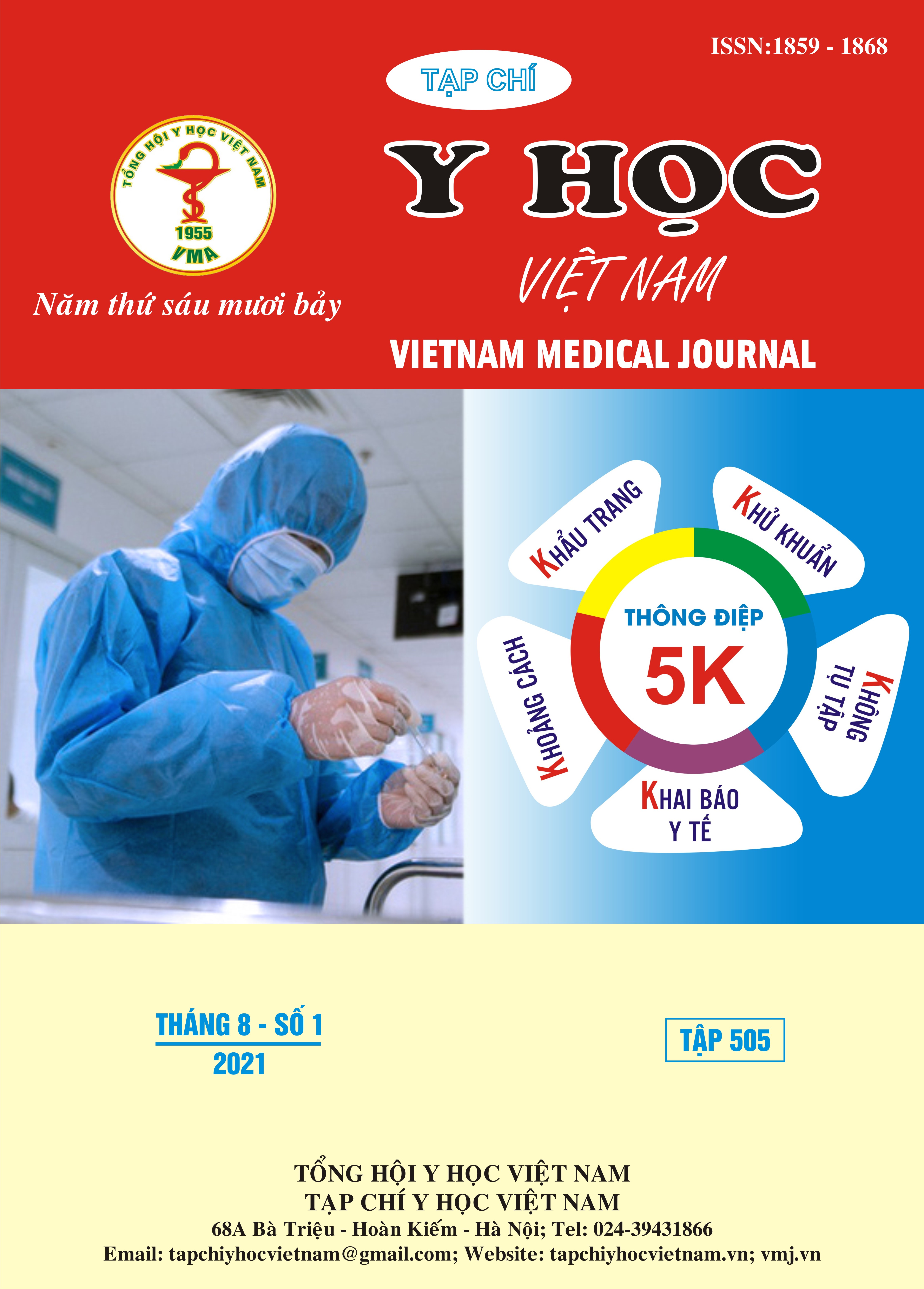SURGICAL GUIDE TEMPLATE FOR DENTAL IMPLANT: A SYSTEMATIC REVIEW
Main Article Content
Abstract
The important goal for successful implant placement is the ideal position of the implant in three dimensions in the bone, long-lasting, functional and aesthetic. The use of surgical guide template (SGT) in implant placement is believed to bring many benefits. Objectives: Describe and meta-analyse the accuracy of implant placement using SGT, marginal bone loss, complications and survival rate of implants with and without SGT. Materials and Methods: Systematic review and meta-analysis of data on accuracy of implant placement, marginal bone loss, complications and survival rate of implants using SGT and do not use SGT from articles, theses and theses on Pubmed, Google Scholar, EBSCOhost Research Databases, library of Hanoi Medical University in English, Vietnamese and hand-held documents. Results: A total of 987 eligible studies were selected from the literature search of 1678 titles from PubMed, Google Scholar, and EBSCO host Research Databases. Finally, 16 studies were included for meta-analysis: 12 studies for objective 1 and 4 studies for objective 2. The results of the meta-analysis showed: angular deviation average 1.40 – 6.530, average cervical deviation 0.46mm - 2.34mm, average apical deviation 0.67mm - 2.53mm. There were no significant differences in the degree of marginal bone loss, complications and implant survival between surgery with SGT and without SGT. Conclusion: Implants using SGT and without using SGT have similar results in terms of marginal bone loss, complications and implant survival rate. However, the use of SGT can help the implant to be placed in a more accurate position in all 3 dimensions in the bone.
Article Details
Keywords
dental implant, surgical guide implant, a review
References
2. Fang Y, An X, Jeong S.M, Choi B.H. Accuracy of computer-guided implant placement in anterior regions. J Prosthet Dent 2019;121(5):836-842 (https://doi.org/10.1016/j.prosdent.2018.07.015).
3. Di Giacomo GA, da Silva JV, da Silva AM, Paschoal GH, Cury PR, Szarf G, et al. Accuracy and complications of computer-designed 24. selective laser sintering surgical guides for flapless dental implant placement and immediate definitive prosthesis installation. J Periodontol 2012;83:410-9 (https://doi.org/10.1902/jop.2011.110115).
4. Schelbert T, Gander T, Blumer M, et al. Accuracy of Computer-Guided Template-Based Implant Surgery: A Computed Tomography-Based Clinical Follow-Up Study. Implant Dent 2019;28(6):556-563 (https://doi.org/10.1097/ID.0000000000000936).
5. Amorfini L, Migliorati M, Drago S, Silvestrini-Biavati A. Immediately loaded implants in rehabilitation of the maxilla: a two-year randomized clinical trial of guided surgery versus standard procedure. Clin Implant Dent Relat Res 2017;19:280–(https://doi.org/10.1111/cid.12459).
6.Tallarico M, Esposito M, Xhanari E, Caneva M, Meloni SM. Computer-guided vs freehand placement of immediately loaded dental implants: 5-year postloading results of a randomised controlled trial. Eur J Oral Implantol 2018;11:203–13.
7. Pozzi A, Tallarico M, Marchetti M, Scarfo B, Esposito M. Computer-guided versus free- hand placement of immediately loaded dental implants: 1-year post-loading results of a multicentre randomised controlled trial. Eur J Oral Implantol 2014;7:229–42.
8.Vercruyssen M, van de Wiele G, Teughels W, Naert I, Jacobs R, Quirynen M. Implant- and patient-centred outcomes of guided surgery, a 1-year follow-up: an RCT comparing guided surgery with conventional implant placement. J Clin Periodontol 2014;41:1154–60 (https://doi.org/10.1111/jcpe.12305).


